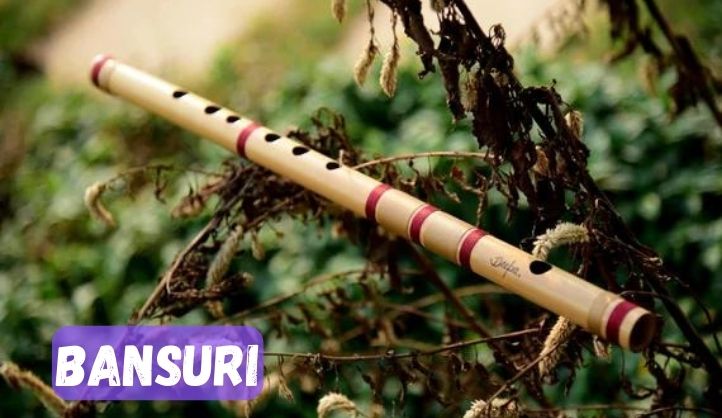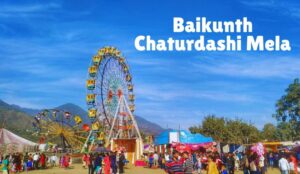Uttarakhand, nestled in the lap of the Himalayas, is a region steeped in natural beauty and rich cultural heritage. Among its many traditional arts and crafts, the bansuri holds a special place. This simple bamboo flute, with its soulful and haunting melodies, has been a part of Uttarakhand’s musical tradition for centuries, embodying the spiritual and pastoral life of its people.
Historical Significance
The Flute is one of the oldest musical instruments in India, dating back to ancient times. Its presence is noted in Hindu mythology, where it is famously associated with Lord Krishna, who is often depicted playing the flute, enchanting both humans and nature with its divine sound. In Uttarakhand, the bansuri’s history is intertwined with the region’s folklore and traditional rituals, reflecting the deep connection between music, spirituality, and daily life.
Craftsmanship
Creating a bansuri is an art in itself. Typically made from a single piece of bamboo, the process involves selecting the right type of bamboo, cutting it to the desired length, and then meticulously carving out the finger holes. The placement and size of these holes are crucial, as they determine the pitch and tonal quality of the instrument. Artisans often rely on traditional knowledge passed down through generations to perfect the craft, ensuring that each bansuri produces a clear and resonant sound.
Musical Role in Uttarakhand
In the villages and towns of Uttarakhand, the bansuri is not just a musical instrument but a cultural symbol. It is played during various ceremonies, festivals, and community gatherings. The melodies of the bansuri are deeply connected to the region’s folk music, which often revolves around themes of nature, love, and devotion.
One of the most significant uses of the bansuri is in the traditional Jagar ceremonies, where it is used to invoke spirits and deities. The instrument’s ethereal sound is believed to bridge the earthly and the divine, making it an essential part of these spiritual rituals.
Bansuri in Contemporary Music
While rooted in tradition, the bansuri has also found a place in contemporary music. Many musicians from Uttarakhand have gained recognition for their ability to blend traditional bansuri music with modern genres. This fusion has not only preserved the instrument’s heritage but has also introduced its enchanting sound to a global audience.
Some other Traditional Instrument of Uttarakhand
1. Dhol
The dhol is a double-headed drum, typically made from wood and animal hide and is one of the most prominent percussion instruments in Uttarakhand. It is often played during festivals, religious ceremonies, and community celebrations. The dhol is known for its deep, resonant sound and is used to provide rhythm and energy to folk dances such as the Barada Nati and Chholiya.
2. Damaun
The damaun is another type of drum, similar to the dhol but smaller in size. It is played with sticks and accompanies the dhol to create intricate rhythmic patterns. The domain’s sharp and clear sound complements the deep tones of the dhol, enhancing the overall musical experience.
3. Ransingha
The ransingha, also known as the narsingha, is a traditional wind instrument made from brass or copper. It is shaped like a curved horn and produces a powerful, booming sound. The ransingha is often used in ceremonial music, particularly during religious processions and traditional weddings. Its majestic sound is believed to ward off evil spirits and invoke divine blessings.
4. Turri
The turri is a type of trumpet made from brass or other metals. It is shorter and more straight compared to the ransingha. The turri is used to signal the start of important events and gatherings. Its loud and clear tone is ideal for capturing the attention of large crowds.
5. Hudka
The hudka is a small, hourglass-shaped drum played with the hands. It is a popular instrument in Kumaoni and Garhwali folk music. The hudka produces a sharp, staccato sound and is often used in combination with other drums and string instruments. It is especially prominent in the folk dances of Uttarakhand, adding rhythm and excitement to the performances.
6. Dholki
The dholki is a smaller version of the dhol, played with both hands. It is an essential accompaniment in folk songs and dances. The dholki’s rhythmic patterns are more intricate and varied, making it a versatile instrument in traditional music ensembles.
Conclusion
The bansuri is more than just an instrument; it is a voice of Uttarakhand’s rich cultural tapestry. Its melodies capture the essence of the region’s natural beauty, spiritual depth, and communal life. As efforts to preserve and celebrate this traditional instrument continue, the bansuri remains a timeless symbol of Uttarakhand’s musical heritage, enchanting listeners with its pure and evocative sound.
FAQs about the Bansuri Traditional Instrument
1. What is a bansuri?
A bansuri is a traditional bamboo flute originating from India. It is a simple, yet highly expressive wind instrument commonly used in classical and folk music, especially in Uttarakhand.
2. How is a bansuri made?
A bansuri is made from a single piece of bamboo. The process involves selecting the right type of bamboo, cutting it to the desired length, and carefully carving out the finger holes to ensure correct pitch and tonal quality.
3. What is the historical significance of the bansuri in Uttarakhand?
The bansuri has deep historical roots in Uttarakhand, being an integral part of the region’s folklore and traditional rituals. It is often associated with pastoral life and is used in various ceremonies and festivals.
4. What role does the bansuri play in Uttarakhand’s music?
In Uttarakhand, the bansuri is a key instrument in folk music, often used to play melodies that reflect themes of nature, love, and devotion. It is also a crucial element in traditional Jagar ceremonies for invoking spirits and deities.
5. Who traditionally plays the bansuri?
Traditionally, the bansuri is played by musicians in rural areas of Uttarakhand, often by shepherds and farmers. It has also been played by skilled musicians in religious and cultural ceremonies.





